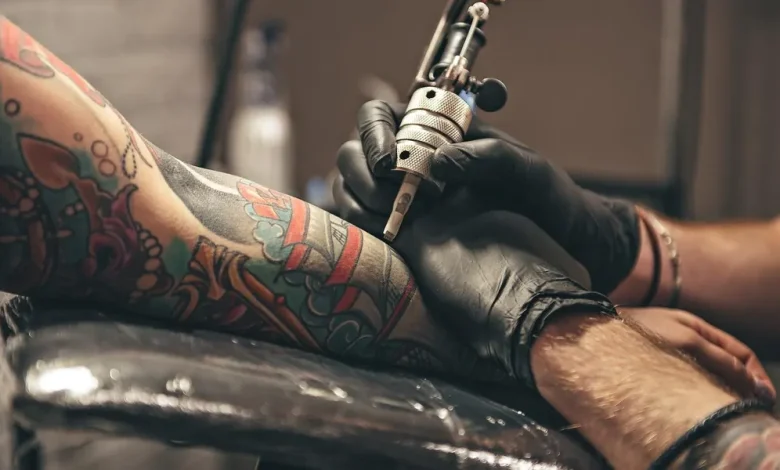Bacteria Found In Multiple Tattoo Ink Brands, Study Suggests: What To Know About Tattoo Ink Infections

Topline
Regardless of sterility claims, a recent study found that over 33% of 75 major brands’ tattoo and permanent cosmetics inks tested positive for germs. The FDA has also issued more warnings regarding infections linked to tattoo ink as a result of an increase in adverse event reports over time.
Key Facts
- A recent study published in Applied and Environmental Microbiology on Tuesday, 75 tattoo and permanent cosmetics inks from 14 well-known brands were evaluated for aerobic and anaerobic microorganisms.
- Anaerobic bacteria, on the other hand, develop and survive in the absence of oxygen and are found in the dermal layer of the skin and wounded human tissue. Aerobic bacteria are defined as bacteria that grow and live when oxygen is available.
- According to the study, they found that almost 35% of the tested inks, both sealed and unopened, were infected with both aerobic and anaerobic microorganisms.
- The researchers discovered that the inks had bacterial contamination regardless of whether the product labels stated they were sterile, indicating that either the sterilizing method is inadequate or the claims are false. More than half of the inks’ labels made sterility claims.
- While allergic and inflammatory reactions are the most frequent adverse consequences associated with tattoos, microbial infections can also occur. While poor hygiene was once believed to be the primary cause of infections, more recent research indicates contaminated tattoo ink may also be the culprit.
Big Number
32 percent. That is the percentage of Americans who, according to data from the Pew Research Center, have at least one tattoo, with about 22 percent having two or more.
Crucial Quote
As to the statement released by Dr. Seong-Jae Kim, the microbiologist from the Food and Drug Administration’s National Center for Toxicological Research and study author, “the rising popularity of tattoo-related complications or adverse reactions in recent years has coincided with an increase in tattoo-related adverse reactions.” “Toxic responses and immunologic complications, including inflammatory reactions and allergic hypersensitivity, constitute a significant portion of these issues, in addition to microbial infections.”
What Kinds Of Microbes Were Discovered Within The Tattoo Ink?
34 distinct species of bacteria were found by the researchers in the samples of ink. Among the bacteria that are most frequently discovered are:
- Urinary tract infections are most commonly caused by Staphylococcus saprophyticus.
- Staphylococcus epidermidis: Usually results in infections acquired from healthcare settings.
- Cutibacterium acnes: Causes infections linked to medical devices and acne.
- Pseudomonas putida: Typically affects immunocompromised people and can cause skin, soft tissue, and pneumonia-related illnesses.
- Drug-resistant bacteria called Stenotrophomonas maltophilia is responsible for urinary tract infections, meningitis, endocarditis, and respiratory tract infections.
Is Contaminated Tattoo Ink Dangerous?
In 2023, the FDA reported that it was receiving more and more reports of allergic reactions and infections caused by tainted tattoo ink. Among the adverse responses are rashes, pimples, and redness. Fever, trembling, chills, and sweating are signs of more serious responses. These infections can be treated with anything from antibiotics to surgery and hospital stays. As per WebMD, staphylococcus and other bacterial skin infections are the most prevalent types of tattoo-related infections. In 2012 and 2019, numerous product recalls were carried out as a result of tattoo ink contaminated with bacteria that led to outbreaks of skin diseases.
Is Tattoo Ink Fda Regulated?
Tattoo and permanent makeup inks are regarded as cosmetics by the FDA. Because of “other competing public health priorities and a previous lack of evidence of safety problems specifically associated with these pigments,” the FDA normally does not regulate the color additives used in inks. Though local governments oversee the actual tattooing industry, the FDA may have oversight over the inks.
What To Watch For
Kim and his group intend to carry out more research to create tattoo ink microorganism detection techniques that are more effective. In order to learn more about the microbiological contamination of tattoo and permanent cosmetics inks, they also intend to do out study.




